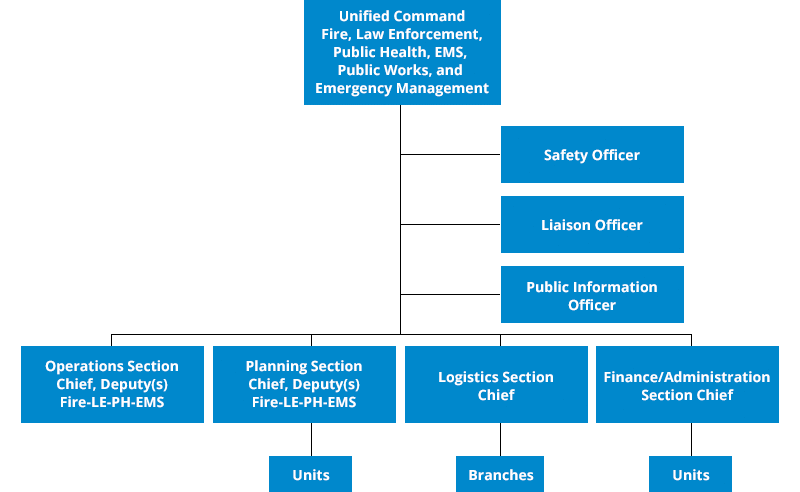
All-Hazard Incident Management Teams (AHIMT) play an essential role in the management of, and response to, local/regional/national emergencies, natural disasters and public events.
An AHIMT is a comprehensive resource (a team) to either enhance ongoing operations through provision of infrastructure support, or when requested, transition to an incident management function to include all components/functions of a Command and General Staff. An AHIMT:
A timeline showing the typical time frames for response and operations of the different types of AHIMTs is shown below.
Upon arrival, the AHIMT’s incident commander (IC) meets with the local IC and the agency administrator (county executive, city manager or mayor, etc.) to determine what they expect from the AHIMT, and to obtain any necessary delegation of authority. The incoming IC then briefs the rest of the incoming AHIMT about their role. The AHIMT integrates as requested into the current Incident Command System structure.
Typical incidents where AHIMTs are used include:
A Type 3 AHIMT is a multi-agency/multi-jurisdictional team used for extended incidents. It is formed and managed at the local, state or tribal level and includes a designated team of trained personnel from different departments, organizations, agencies and jurisdictions.

Type 3 AHIMTs are deployed as a team of 10-20 trained personnel, representing multiple disciplines who manage major and/or complex incidents requiring a significant number of local, state or tribal resources. They manage incidents that extend into multiple operational periods and require a written Incident Action Plan. A Type 3 AHIMT may initially manage more complex incidents that later transition to a national level AHIMT.
Page last reviewed: June 23, 2023